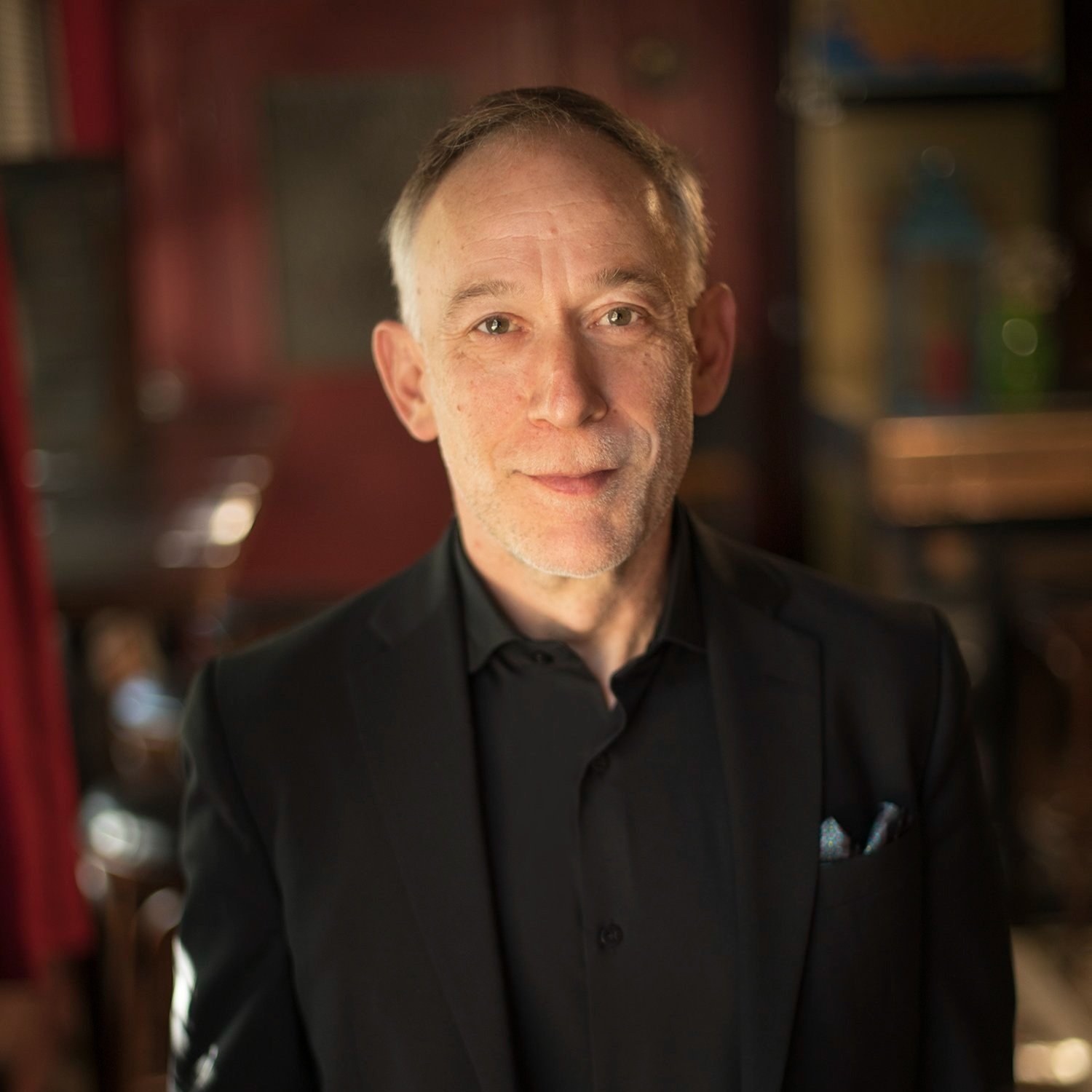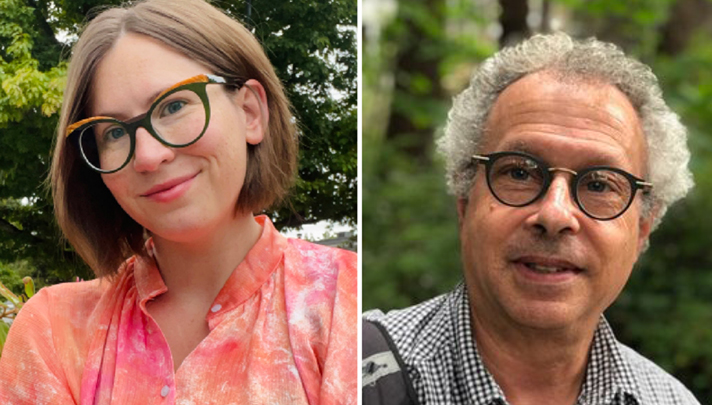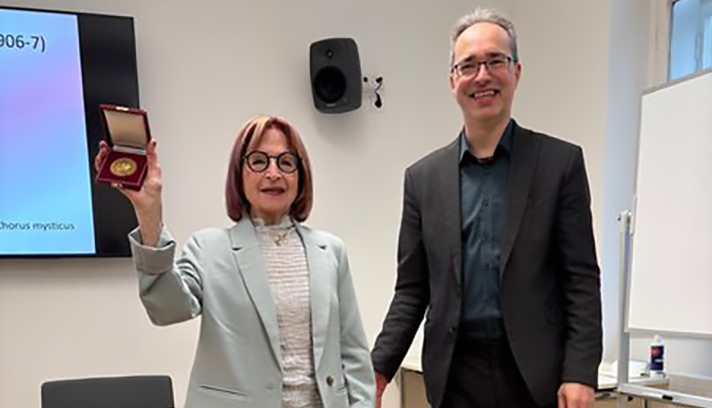Our Playlist column features music curated by our faculty, students, and staff and focusing on an interesting idea or theme. In this column, School of Music staff member Dina MacDougall shares music inspired by the beauty and rhythms of the natural world.
By Dina MacDougall
We start our journey with melodies inspired by the lunar cycle, then travel to the Arctic by dog sled, accompanied by throat singing and strings. After an expansive meditation on the effects of melting polar ice, we continue on to a prairie lake to nourish our spirit.
Scroll to view the full playlist, or open in Spotify >>
Next, explore a mythological Finnish forest, then dive deep into a lush seascape. Marvel at the birds and bees, then travel back to the Arctic and look up to the magic of the Northern Lights.
Moon by Björk and Damian Taylor — Performed by Björk
Moon features a 17/8 time signature inspired by the cycles in nature. The bright, silvery harp melody follows the rise and fall of the oceans caused by changing lunar phases. Bjork wanted the music to, “weave seamlessly into science, a natural element, and musicology.”
Cercle du Nord III by Derek Charke — Performed by the Kronos Quartet and Tanya Tagaq
The sounds of wales, ravens, and sled dogs transport you to the extraordinary world of the Arctic. The brilliant string work of the Kronos Quartet meshes well with Tanya Tagaq’s mesmerizing throat singing—at times you are unsure where one ends and the other begins. This is music of land and life in the far north.
Become Ocean by John Luther Adams — Performed by the Seattle Symphony Orchestra, Ludovic Morlot conductor
Become Ocean is a meditation on the effects of melting polar ice and rising seas. I found that I was pulled deeper into this world with each stunning crescendo. The music is lush, expansive, unsettling, and oddly hopeful.
Adams said of his Pulitzer Prize-winning work, “By deepening our awareness of our connections to the earth, music can provide a sounding model for the renewal of human consciousness and culture.”
Clear Lake by T. Patrick Carrabré — Performed by M Gillian Carrabré violin, Kerry DuWors violin, Ariel Carrabré cello, Catherine Wood clarinet, Madeline Hildebrand piano
I’ve never been to Clear Lake in Manitoba, but while listening to this piece, I imagine loons calling through the mist, elk lumbering in nearby forests, and summers as ephemeral as the aurora borealis.
Carrabré says of his music, “Thematically, these works search for connections to the past, while hoping that we will learn from that past and forge a better future, where diversity is valued and our connection to each other and the natural world nourishes our spirits.”
Tapiola, Op. 112 (The Forest) by Jean Sibelius — Performed by Gothenburg Symphony Orchestra, Neeme Järvi conductor
Sibelius’ symphonic poem is based on Tapio the forest spirit from the Finnish work of epic poetry, Kalevala. This haunting and sometimes stark landscape is filled with moments of windswept forests, melancholic mist, and enchanting creatures.
Sibelius used the following excerpt from the Kalevala as inspiration for the published score. It is translated here: ”In Pohjola there are thick, dark forests that dream wild dreams, forever secret. Tapio’s eerie dwellings are there and half-glimpsed spirits, and the voices of twilight.”
(ocean) Bloom by Radiohead and Hanz Zimmer — Radiohead & BBC Concert Orchestra, Hanz Zimmer conductor
Take a deep breath. Thom Yorke’s voice soars as you are plunged into a lush sonic seascape. Hanz Zimmer and Radiohead reimagine the band’s song Bloom, from The King of Limbs, for BBCs Blue Planet II series.
Sir David Attenborough’s narration over the stunning cinematography moves beautifully with this orchestration and captures the scale and wonder of the world beneath the waves.
As this version isn’t available on Spotify, I’ve included the original Radiohead version in its place. The rhythm and colour in this song feels more at home with the sea creatures that live in the deepest dark.
Oiseaux bleus et sauvages by Jocelyn Morlock — Performed by the Vancouver Symphony Orchestra, Bramwell Tovey conductor
Oiseaux bleus et sauvages was Morlock’s first commission from the Vancouver Symphony Orchestra. It is a stunning and evocative piece full of vibrant musical imagery painting the twittering, fluttering, and foraging life of birds.
Bees, Bees, Bees by Wynton Marsalis — Wynton Marsalis and the Jazz at Lincoln Centre Orchestra, featuring Lil Buck and Jared Grimes dancers
Bees, Bees, Bees is the final movement of Spaces, a suite of compositions written for dancers and “for all ages in spirit and years”. This piece honouring bees, is a delightful collaboration that showcases the dazzling dancing talents of Buck and Grimes as they tap, tap, tap through JLCO’s frenetic flourish. Opening with a swarm of buzzing kazoos, the pace is fast and frenzied and in the spirit of Rimsky-Korsakov’s The Flight of the Bumblebee.
Ukiuq (Northern Lights) by The Jerry Cans — Performed by The Jerry Cans
The Jerry Cans are a band from Iqaluit, Nunavut who make music celebrating the beauty of life in the Arctic while addressing misconceptions about their Northern community. Written mainly in Inuktitut, this music features Inuit throat singing, Cape Breton fiddle music, and buzzing indie rock with elements of classical music.
This is one of my favourite kitchen party songs. I especially love the sound of boots crunching in the snow and a snowmobile racing off at the end of the song. It reminds me of deep winter in Northern Alberta.


